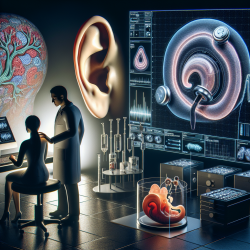Understanding Tissue Transition Modeling for Better Therapeutic Outcomes
In the realm of speech-language pathology, especially when working with children, the focus is often on creating the best possible outcomes through evidence-based practices. Recent advancements in modeling biological tissues, as discussed in the research paper "Functional Grading of a Transversely Isotropic Hyperelastic Model with Applications in Modeling Tricuspid and Mitral Valve Transition Regions," offer intriguing possibilities for improving therapeutic interventions.
Why Tissue Transition Modeling Matters
Understanding the transition regions between different tissue types is crucial. These regions often determine how forces are distributed across tissues, which can impact injury mechanisms and therapeutic outcomes. The study in question presents a novel approach to modeling these transitions using functionally graded material (FGM) models, which could be revolutionary for practitioners aiming to enhance therapeutic techniques.
Key Insights from the Research
The research emphasizes the importance of accurately characterizing the transition regions in tissues like the tricuspid and mitral valves. These insights are vital because they provide a more realistic representation of tissue behavior under stress, which is crucial for developing effective therapeutic strategies.
- Functional Grading: The study introduces a method for functionally grading tissue properties, allowing for a more nuanced understanding of how different tissues interact.
- Model Validation: The FGM model's predictions were validated against experimental data, showing good agreement and suggesting its potential for broader application.
- Implications for Therapy: By understanding tissue transitions better, practitioners can develop more effective therapeutic interventions that consider the complex interplay of different tissue types.
Applying These Insights in Practice
For practitioners, incorporating these insights into therapy could mean developing new strategies that better address the complexities of tissue behavior. This could lead to more effective treatment plans and improved outcomes for children receiving speech therapy.
Encouraging Further Research
While this study provides a solid foundation, there is still much to learn about tissue transitions. Practitioners are encouraged to engage with this research and consider how they might contribute to further studies, potentially leading to even more refined therapeutic techniques.
To read the original research paper, please follow this link: Functional Grading of a Transversely Isotropic Hyperelastic Model with Applications in Modeling Tricuspid and Mitral Valve Transition Regions.










